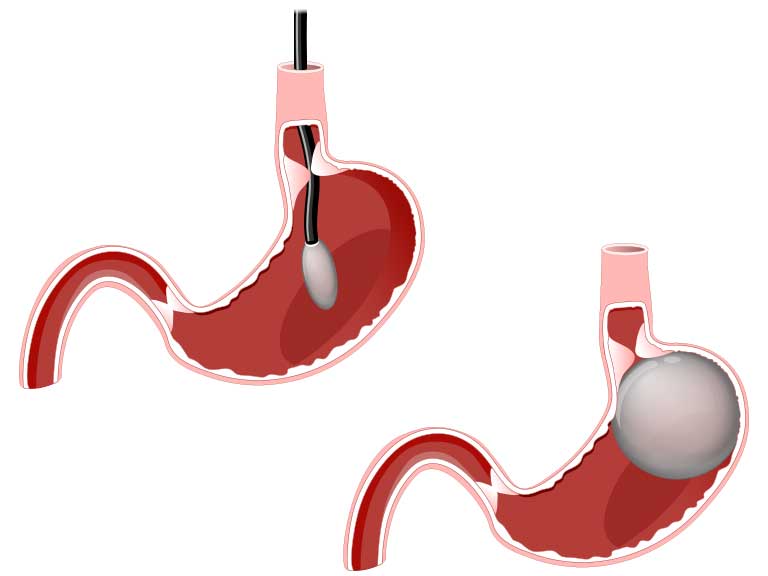Gastric Balloon
Gastric balloon insertion is a non-surgical, minimally invasive weight loss procedure that involves inserting a balloon into the stomach to reduce its volume and create a feeling of fullness. This procedure can help people who are struggling with obesity to lose weight and improve their overall health but who don’t want to have surgery.

What is a gastric balloon?
A gastric balloon is a soft, silicone balloon that is inserted into the stomach through the mouth and oesophagus. Once the balloon is in place, it is filled with a sterile saline solution, which expands the balloon and creates a feeling of fullness in the stomach. The balloon remains in the stomach for a period of 6 to 12 months before it is removed.
Why would someone need to have a gastric balloon placed?
A gastric balloon may be recommended for people who are struggling with obesity and have not been successful with diet and exercise alone. This procedure can help people to lose weight by reducing the amount of food they can eat and creating a feeling of fullness after small meals.
A gastric balloon may also be recommended for people who are not good candidates for weight loss surgery, such as gastric bypass or sleeve gastrectomy. This procedure is minimally invasive and does not require any incisions or changes to the digestive system.
Surgical procedure to place a gastric balloon
The surgical procedure to place a gastric balloon is typically done on an outpatient basis and takes about 20 to 30 minutes to complete. The procedure is usually performed under light sedation or general anaesthesia, depending on your individual needs.
During the procedure, Dr Lorenzo will insert a flexible endoscope through the mouth and oesophagus and into the stomach. The endoscope is equipped with a camera and specialised instruments that are used to insert the deflated balloon into the stomach.
Once the balloon is in place, Dr Lorenzo will fill it with a sterile saline solution. The balloon is designed to be self-sealing, which means that it will not leak or deflate. Once the balloon is filled, the endoscope is removed, and the procedure is complete.
After the procedure, the patient will be monitored for a few hours before being discharged from the hospital. They will be instructed to follow a special diet and exercise plan to help maximise weight loss and reduce the risk of complications.
Benefits of gastric balloon placement
- Significant weight loss: People who have a gastric balloon placed can expect to lose an average of 10-15% of their excess body weight.
- Improved health: Weight loss can help to improve overall health, including reducing the risk of obesity-related diseases such as diabetes, high blood pressure, and sleep apnea.
- Minimally invasive: The gastric balloon placement procedure is minimally invasive and does not require any incisions or changes to the digestive system.
- Temporary: The gastric balloon is temporary and can be removed after 6 to 12 months
Risks
- Nausea and vomiting: Some people may experience nausea and vomiting for the first few days after the procedure.
- Abdominal pain: Some people may experience mild to moderate abdominal pain or discomfort after the procedure.
- Infection: There is a risk of infection at the insertion site or inside the stomach.
- Balloon deflation or leakage: There is a small risk of the balloon leaking or deflating, which may require additional surgery.
- Blockage or obstruction: There is a risk of the balloon causing a blockage or obstruction in the digestive system, which may require additional surgery.

